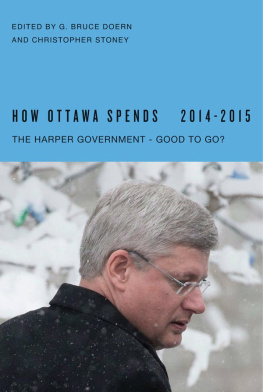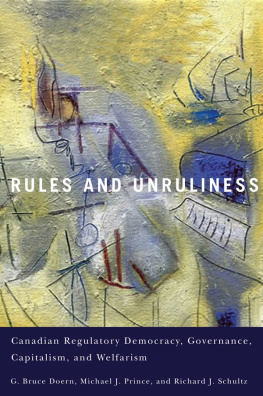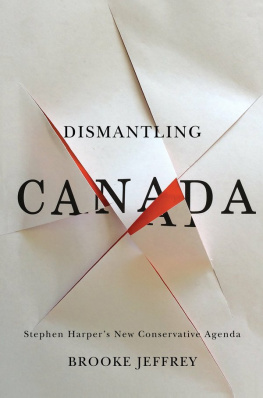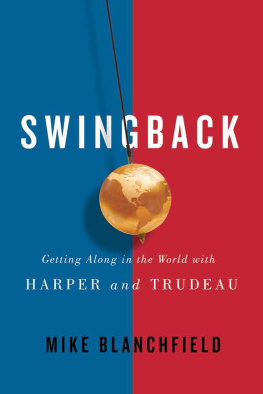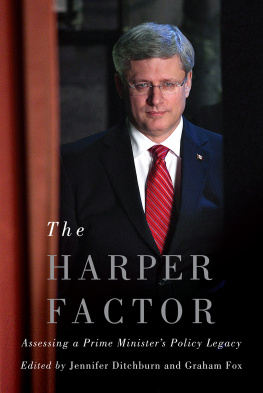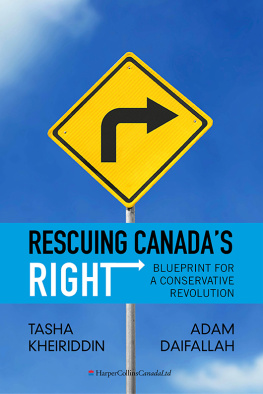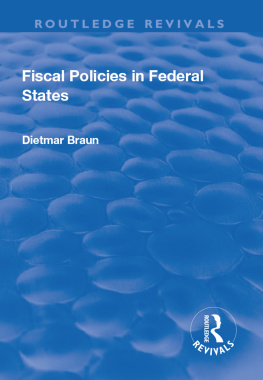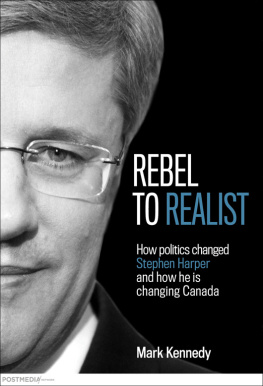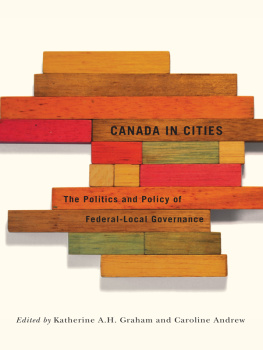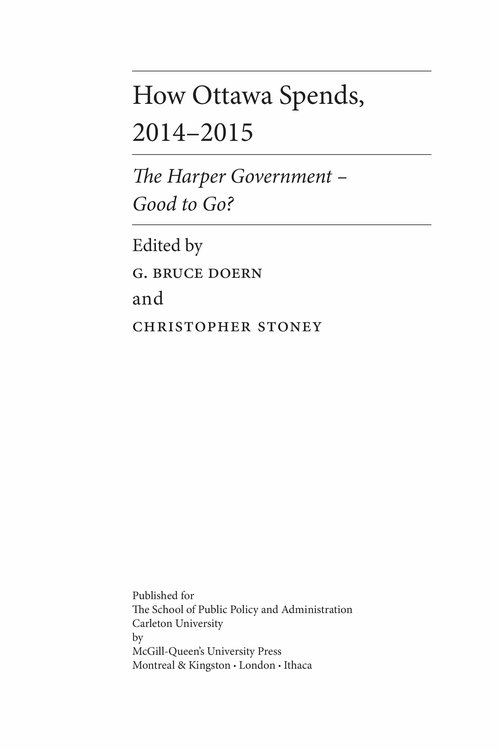THE SCHOOL OF PUBLIC POLICY AND ADMINISTRATION
at Carleton University is a national center for the study of public
policy and public management.
The Schools Centre for Policy and Program Assessment provides
research services and courses to interest groups, businesses, unions,
and governments in the evaluation of public policies, programs
and activities.
School of Public Policy and Administration
Carleton University
10th Floor Dunton Tower
1125 Colonel By Drive
Ottawa, ON
Canada K1S 5B6
www.carleton.ca/sppa
McGill-Queens University Press 2014
ISBN 978-0-7735-4444-4 (paper)
ISBN 978-0-7735-8498-3 (ePDF)
ISBN 978-0-7735-8499-0 (ePUB)
Legal deposit fourth quarter 2014
Bibliothque nationale du Qubec
Printed in Canada on acid-free paper that is 100 % ancient forest free
(100 % post-consumer recycled), processed chlorine free
McGill-Queens University Press acknowledges the support of the Canada Council for the Arts for our publishing program. We also acknowledge the financial support of the Government of Canada through the Canada Book Fund for our publishing activities.
Library and Archives Canada has catalogued this publication as follows:
How Ottawa spends.
1983
Imprint varies.
Includes bibliographical references.
Continues: How Ottawa spends your tax dollars, ISSN 0711-4990.
ISBN 0822-6482
ISBN 978-0-7735-4444-4 (2014/2015 edition)
ISBN 978-0-7735-8498-3 (ePDF). ISBN 978-0-7735-8499-0 (ePUB)
1. Canada Appropriations and expenditures Periodicals. I. Carleton University. School of Public Policy and Administration
HJ7663.H69 354.710072'2 C84-030303-3
This book was typeset by Interscript.
Preface
This is the 35th edition of How Ottawa Spends. As always we are greatly indebted to our roster of contributing academic authors and other expert authors from across Canada and abroad for their research, their insights, and for their willingness to contribute to public debate in Canada.
Thanks are also owed to Sheena Kennedy and Mary Giles at Carleton Universitys School of Public Policy and Administration for their excellent research and technical support and to Ryan Van Huijstee and his colleagues at McGill-Queens University Press for their always professional editorial and publishing services and expertise.
We also extend our deep appreciation for the scholarly stimulation and encouragement provided by our colleagues at the School of Public Policy and Administration and at the Politics Department, University of Exeter, UK.
G. Bruce Doern and Christopher Stoney
Ottawa
How Ottawa Spends, 20142015
1 The Harper Government Good to Go?
G. BRUCE DOERN AND CHRISTOPHER STONEY
INTRODUCTION
In last years How Ottawa Spends, we characterized the Harper Conservative government as suffering from the mid-term blues but still offering up its long-term policy plans. In 201415 our entry point is to ask whether the Harper government is good to go. Good to go refers to the increasing possibility that it will be out of office after the fall 2015 federal election.
The immediate trigger for the good to go descriptor and prediction was the increasingly direct association of the Senate scandal with the prime minister himself and with the Prime Ministers Office (PMO). Good to go was of course the phrase uttered by former PMO chief of staff Nigel Wright to Harpers legal counsel Benjamin Perrin after Wright had spoken to Harper about whether the $90,000 payment to reimburse Senator Mike Duffy for alleged illegal expenses would proceed. Wright sent an email saying we are good to go from the PM. The exchange emerged after court documents were made public, suggesting to many that Harper was more fully briefed on the Duffy deal than he subsequently led parliament and the media to believe during weeks of unrelenting questioning from opposition parties. The ambiguous phrase quickly morphed via social media, regular media, and opposition party coverage into notions that Harper was good to go and variously that his government was good to leave office (and indeed that Harper might want to leave as Conservative leader) and that Tory ministerial challengers were beginning to become more public in their criticisms of Harper. Harper has denied repeatedly that he had anything to do with such a payment but this defence did not resonate with his super-controlling prime ministerial style, including his reputation as arguably the micro-manager supreme.
Such triggers and labels for discussing and predicting the possible demise of a government can often turn on very specific high profile events / decisions but they can also emerge in the context of the life cycle of governments in power. Harper is now in his eighth year in office and such periods of long tenure are often precisely the time when Canadian voters, not to mention the media, are anxious to find ways of expressing the normal clarion call of time for a change. Similar rumblings of discontent had emerged in the latter Liberal Chrtien-Martin era in the 2003 to 2005 period in the wake of the Sponsorship corruption scandal and indeed in Martins battle within the Liberal cabinet to succeed Chrtien as prime minister.
This chapter explores the probability and possibility of the good to go argument. It does so in two major ways. First we explore the building and immediate context of political-economic forces and policies that are shaping the run-up to a late 2015 fall election. Second we set out and examine the Harper governments priorities as expressed both in its October 2013 Speech from the Throne and in the closely linked and themed Budget Speech of February 11, 2014. In both sections, we relate these priorities and policies to the insights and arguments supplied by our contributing authors both on macro issues and on selected more particular policy and federal departmental realms. Brief conclusions then follow.
POLITICAL-ECONOMIC FORCES AND CONTEXT
With the next election drawing ever nearer, strategies and battle lines are becoming increasingly clear as the parties look to define the issues and shape the political agenda. For the Harper Conservatives they remain focused on the narrative of overseeing an improving economy, job creation and growth and a balanced budget without raising taxes. While the government will be able to point to its achievements in slaying the deficit, and even trumpet a modest surplus by Budget 2015, the recovery has been more sluggish than they would have liked and concern still lingers that further stimulus funding will be required both for public infrastructure and private corporations, particularly those located in the auto and manufacturing sector.

